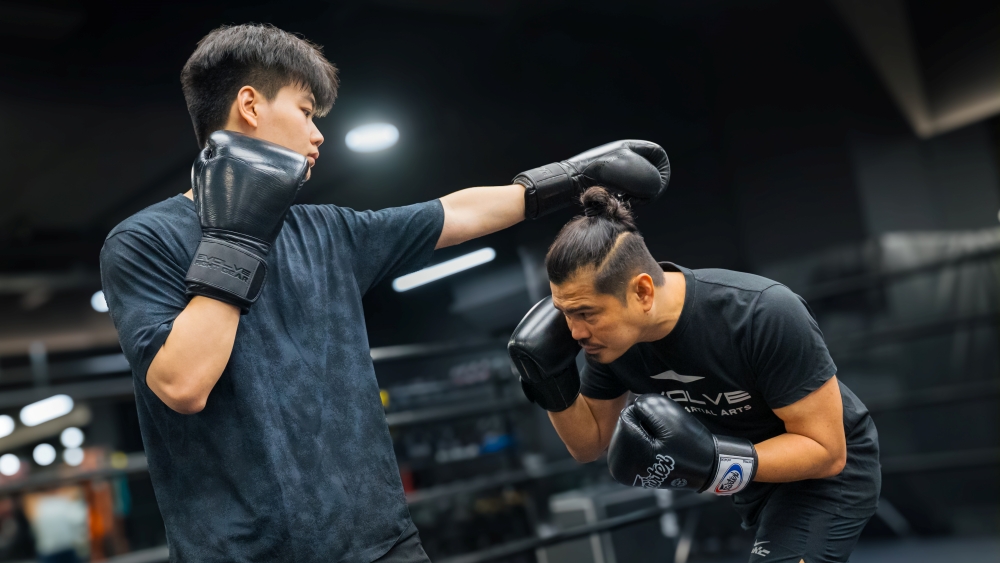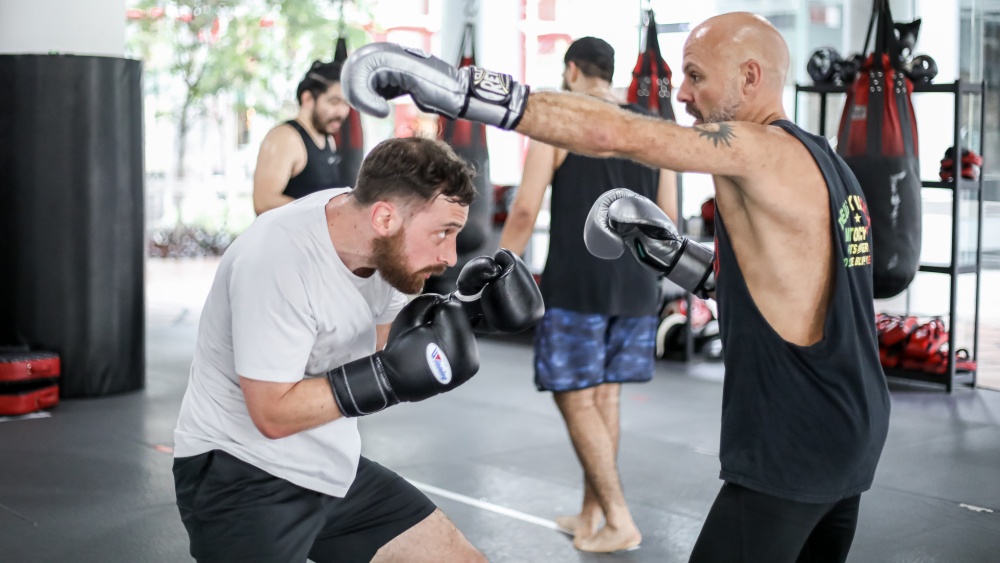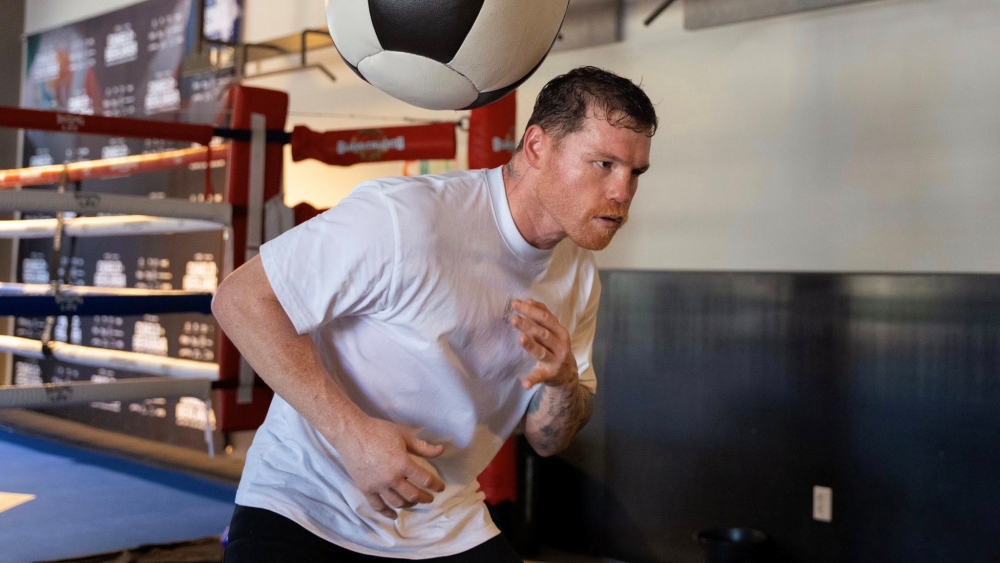Why are stance and balance so important in boxing? Learning how to stand in the ring and proper foot positioning is one of the first things you study when you take up the ‘sweet science.’ In many ways, beginners have to re-learn how to use their feet and move to become a good boxer.
If you lose your balance in boxing, you could find yourself hitting the canvas from the mere force of a punch. In the same vein, punches you take are more damaging.
Mastering your balance and perfecting your stance means you can also launch attacks with the proper kinetic transfer. This makes your punches stronger and more powerful. It also means you can maneuver and evade an opponent’s punches with greater efficiency, and even allows you to take damage better.
What is the perfect boxing stance?
It’s no doubt an interesting question because there are many boxing stances that have their own set of advantages and disadvantages. There is no one particular stance to go by. However, you should train yourself in a stance that maximizes your potential and plays to your strengths. The perfect stance is one that is best suited for your particular fighting style and skills.
Let’s go deeper into this topic. Today, Evolve Daily shares how to understand and master balance, as well as perfect your boxing stance.
1) Proper Foot Placement
To improve your balance for boxing, you first need to understand proper foot placement. You can’t just stand in front of your opponent squared up, that’s a recipe for disaster. Having proper foot placement in your boxing stance is key to having excellent balance. Where you place your feet sets up the advantages and disadvantages you will have on both offense and defense, especially in terms of mobility.
The first concept any aspiring boxer should try to understand when it comes to the boxing stance is toe-heel alignment.
First, start by placing your feet at a shoulder-width distance from each other. Next, take one foot and move it backward. If you’re right-handed (orthodox), your left foot should be in front, toes pointing toward your opponent. Your right foot should serve as the rear foot. Don’t stand flat on it. Instead, stand on the ball of your rear foot to keep you light and mobile. If you’re left-hand dominant (southpaw), then your right foot should take the lead.
This is the basic boxing stance.
2) Lower Body Positioning
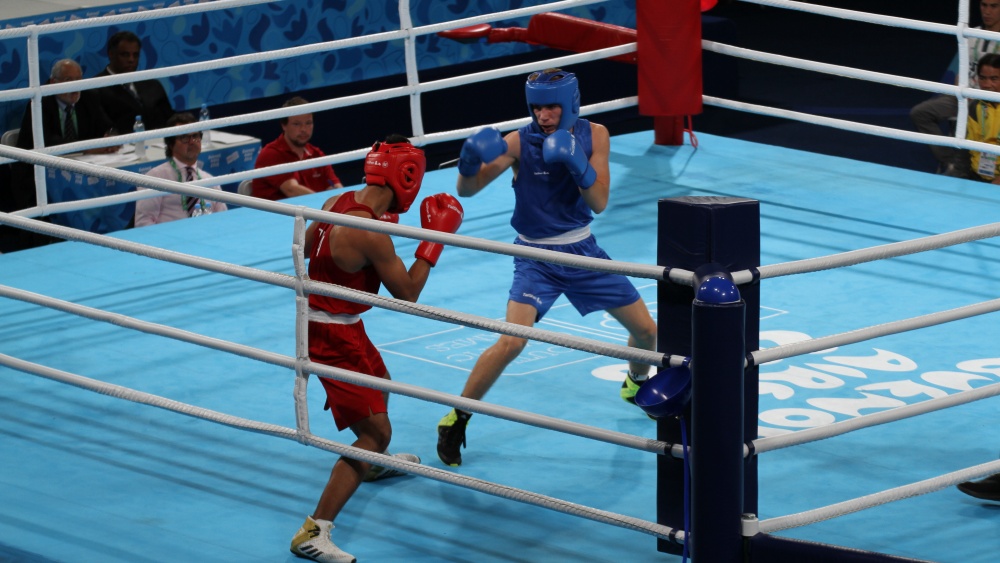
Next is knowing how to position your lower body. Here are some general boxing stance principles.
As previously mentioned, the heel of your rear foot should be slightly off floor level, maybe up to an inch off the ground. The weight on your rear foot should be primarily on the ball. The lead foot heel can be planted, which will help you maximize kinetic energy transfer thus making your punches more powerful.
Although you need to have the flexibility to shift your weight forward or backward, toward the lead foot or the rear foot, try to maintain a center of gravity by placing more of your weight toward the lead foot, at about a 55/45 percent ratio.
Don’t put too much weight on your front foot, because it will make it harder for you to step away fast enough on defense. It also shaves a little off of your straight cross.
Your knees should also be slightly bent. You don’t want the leg extended which will have you fight too tall. This will give you better balance, increased punching power, and fluid mobility.
3) Upper Body Positioning
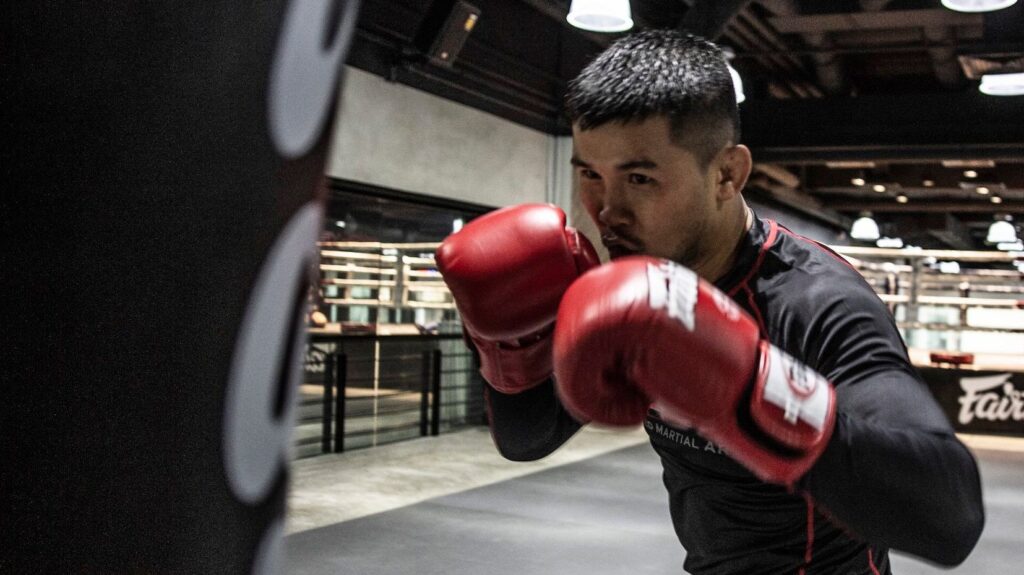
Just as important as the lower half of your body is upper body positioning.
Keep your shoulders and arms loose and relaxed. Elbows should be tucked in to protect the body. Your lead hand should flow in front of your body, ready to block and parry incoming shots. The rear glove should cover your chin up to the cheekbone without impairing your vision. It is responsible for protecting you against your opponent’s left jabs, as well as left hooks.
Your chin should be tucked into your chest. Most pro boxers bite down on their mouthpiece and clench their jaw tight. This minimizes damage on impact, should you take a solid punch to the chin. Mexican-American legend Oscar De La Hoya was notorious for biting down so hard on his mouthpiece that his teeth would break through the silicone rubber.
As with everything in your boxing stance, you should be flowing, loose, and relaxed, ready to explode with your techniques rather than tight and tense. Being too tight and tense burns up energy quickly and allows for the rapid buildup of lactic acid in your muscles, which will wear out your arms and legs fast.
4) Understanding The Center of Gravity
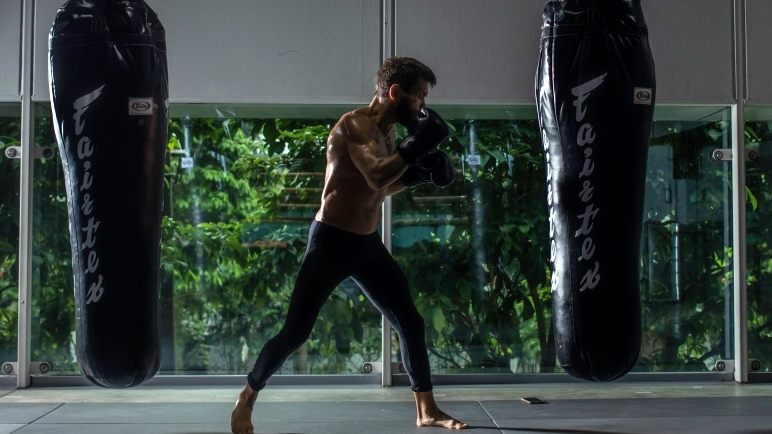
Let’s go into the center of gravity a little more.
Being conscious of your center of gravity while you’re still learning the basics is the best you can do for learning how to control your balance. A lot of young fighters try to move a certain way that’s flashy. Everyone wants to be a showman. But before you can dazzle the crowd, you need to have a firm grasp of the fundamentals, and having a good balance is one of the most important things.
You will find your center of gravity when you bear down on your hips. Being hip-heavy will allow you to feel that gravity and control it. When you bend your knees, you lower your center of gravity. The lower your center of gravity, the harder it is for you to lose your balance when you’re fighting. However, the lower it gets, the more cumbersome it is to move because you have all that weight concentrated in one area.
In an ideal situation, you want to keep your center of gravity low enough for stability, while at the same time, be mobile enough that you can explode quickly. That’s the hardest part about balance in boxing. It’s having your center of balance low enough so you’re stable, but also having the ability to move around the ring and throw your combinations.
Every movement you make will take you off your center of gravity and momentarily put you off balance, so make sure you snap right back into place after moving.
You may also like:


